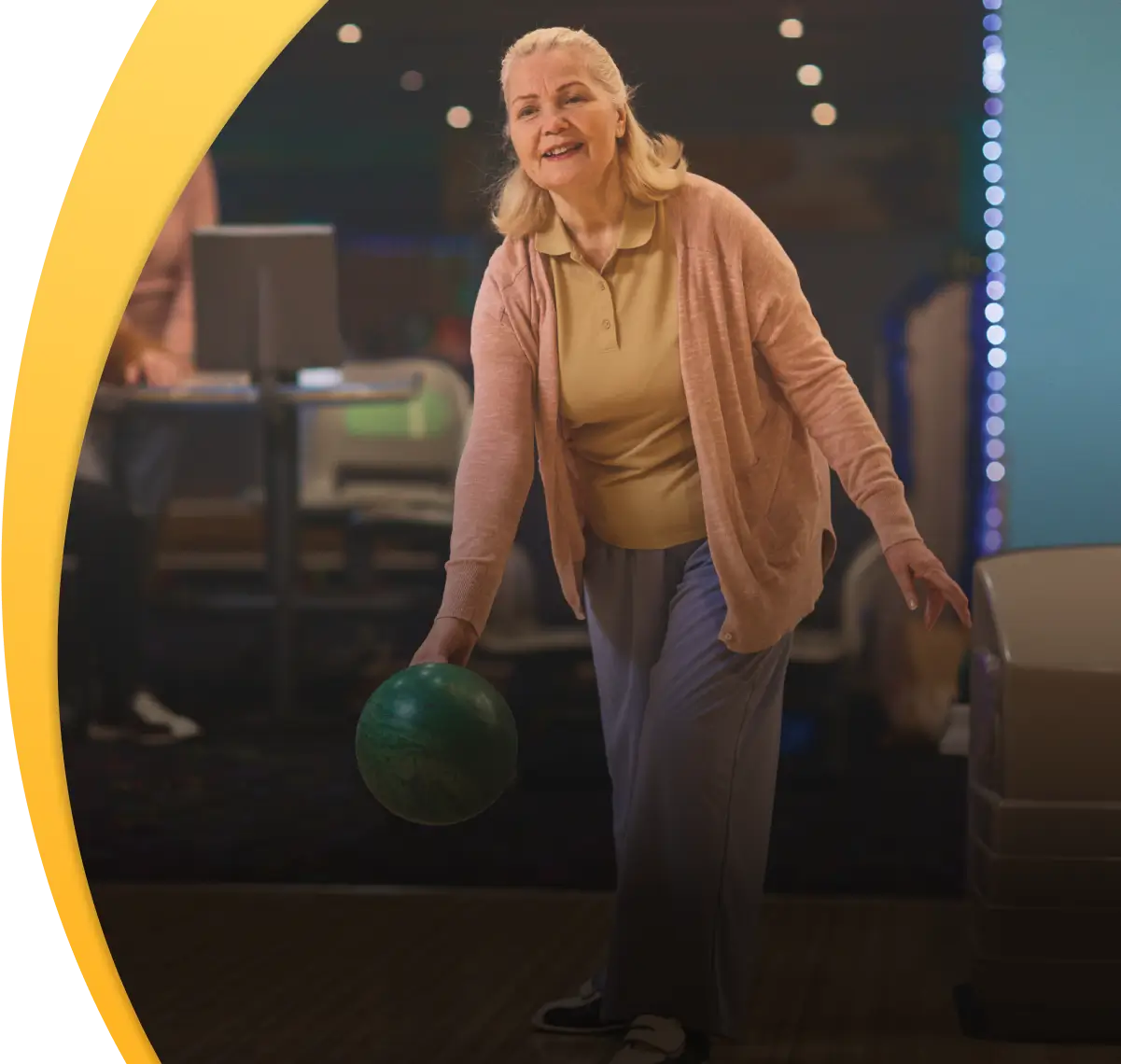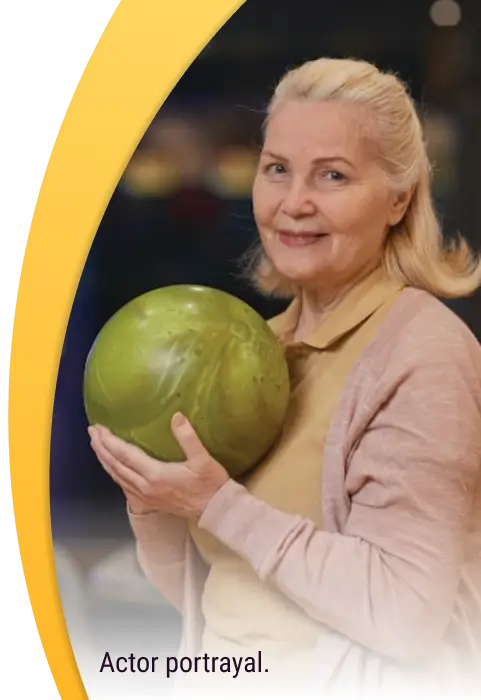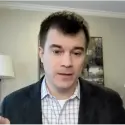Discover the benefits of on-demand therapy with Dr Drew Falconer
Listen in as Dr Drew Falconer, Medical Director of Inova Parkinson’s and Movement Disorders Center, explains the benefits of on-demand therapy. Dr Falconer is a board-certified neurologist and a fellowship-trained movement specialist who works specifically in the advanced care of patients with Parkinson’s disease.
Taking charge of returning symptoms
Although some details have been changed, these stories are all based on actual Parkinson's patients taking carbidopa/levodopa (CD/LD) and their experiences with INBRIJA.
- INBRIJA starts to work in as early as 10 minutes so patients can get back in charge of their day13
- In a randomized, double-blind, placebo-controlled study of INBRIJA for the treatment of OFF periods in patients with Parkinson’s disease treated with CD/LD, INBRIJA provided significant improvement in motor function 30 minutes post dose13
- INBRIJA is inhaled levodopa and can be taken up to 5 times a day when symptoms return (no more than 1 dose per OFF period)
MEET VIV,
a 63-year-old woman on CD/LD whose mornings were eclipsed by returning symptoms

When her granddaughter’s weekly ballet practice was moved from the afternoon to the morning, Viv was no longer able to attend
-
Viv's return of symptoms (difficulty walking, muscle discomfort, and tightness) made it a challenge to get her day started.
-
She scheduled her mornings around her OFF symptoms and avoided activities outside of the house.
Taking charge of her OFF periods
-
Since her doctor prescribed on-demand INBRIJA to help with her return of symptoms, Viv has gone back to being a regular presence at her granddaughter’s morning ballet practice.



MEET THOMAS,
a 64-year-old man on CD/LD who was grounded by symptom return

Thomas became discouraged by his unpredictable return of symptoms. He spent more time at home alone and had to give up an activity he was passionate about
-
Thomas' symptom return (tremors, loss of dexterity, slowness, and clumsiness) caused him to accidentally drop the model planes.
-
During a group tour, he experienced a return of symptoms, which impacted his ability to finish the tour due to slowness and stiffness affecting his walking.
Getting Thomas back on track with INBRIJA
-
Because Thomas was experiencing unpredictable symptom return, his doctor decided to add INBRIJA in addition to adjusting his baseline medications, allowing Thomas to address his symptom return and resume the volunteer work he loves.



MEET PATRICK,
a 59-year-old man on CD/LD who was sidelined by symptom return

Patrick began to cut back on face-to-face meetings at work and stopped going to the gym because he was concerned that his symptoms would return unexpectedly
-
Patrick began experiencing disruptive symptom return, which typically included rigidity and slowness. Oral therapy took some time to begin to work and the disruptions were distressing—especially in the office.
-
If Patrick’s symptoms returned while he was in the gym, they usually put an end to his workout.
Getting back on his game
- In addition to adjusting Patrick’s baseline treatment, his doctor also prescribed on-demand INBRIJA so that he can manage his symptom return anytime, anywhere.
Refer to the Full Prescribing Information for the Instructions For Use.



MEET stephen,
a 62-year-old man on CD/LD who was knocked off his game by symptom return

Stephen’s concern and frustration over symptom return began to keep him from playing golf and seeing his friends
-
Stephen started experiencing returning symptoms like tremors, rigidity, and gait disturbance, often while playing golf.
-
He would have to quit before finishing the round because his next dose of oral CD/LD would not begin working soon enough.
Getting back on course
-
Stephen’s doctor adjusted his baseline regimen and also added on-demand INBRIJA to help manage his symptoms when they occur so that Stephen wouldn’t miss out on important moments with his friends.



MEET andrea,
a 58-year-old woman on CD/LD who was taken out of the game by symptom return

Andrea’s concern over symptom return in public caused her to begin skipping her weekly bowling night with the girls
-
Andrea started experiencing unexpected symptom return, which typically included difficulty walking, tremors on her left side, quiet voice, and “everything slowing down.”
-
Andrea's concern that her symptoms would return and impact her in public caused her to begin skipping social events and regular get-togethers.
How Andrea got back in the game
-
After Andrea shared how the unpredictability of symptom return was affecting her day, her doctor decided to prescribe on-demand INBRIJA in addition to adjusting her baseline medication. Now, Andrea is excited to be back at bowling night with her friends.




Meet VIV,
a 63-year-old woman whose mornings were eclipsed by returning symptoms

-
Loves to attend her granddaughter’s ballet practice
-
Taking CD/LD for 6 years
-
Taking charge of her OFF periods


MEET VIV,
a 63-year-old woman on CD/LD whose mornings were eclipsed by returning symptoms
When her granddaughter’s weekly ballet practice was moved from the afternoon to the morning, Viv was no longer able to attend
-
Viv's return of symptoms (difficulty walking, muscle discomfort, and tightness) made it a challenge to get her day started.
-
She scheduled her mornings around her OFF symptoms and avoided activities outside of the house.
Taking charge of her OFF periods
-
Since her doctor prescribed on-demand INBRIJA to help with her return of symptoms, Viv has gone back to being a regular presence at her granddaughter’s morning ballet practice.



Meet thomas,
a 64-year-old man who was grounded by symptom return

-
Loves volunteering at a local museum and teaching people about planes
-
Taking CD/LD for 8 years
-
Getting back on track with INBRIJA


MEET THOMAS,
a 64-year-old man on CD/LD who was grounded by symptom return
Thomas became discouraged by his unpredictable return of symptoms. He spent more time at home alone and had to give up an activity he was passionate about
-
Thomas' symptom return (tremors, loss of dexterity, slowness, and clumsiness) caused him to accidentally drop the model planes.
-
During a group tour, he experienced a return of symptoms, which impacted his ability to finish the tour due to slowness and stiffness affecting his walking.
Getting Thomas back on track with INBRIJA
-
Because Thomas was experiencing unpredictable symptom return, his doctor decided to add INBRIJA in addition to adjusting his baseline medications, allowing Thomas to address his symptom return and resume the volunteer work he loves.



Meet PATRICK,
a 59-year-old man who was sidelined by symptom return

-
Committed to regular exercise and physical therapy up to 3 times a week
-
Taking CD/LD for 9 years
-
Getting back on his game


MEET PATRICK,
a 59-year-old man on CD/LD who was sidelined by symptom return
Patrick began to cut back on face-to-face meetings at work and stopped going to the gym because he was concerned that his symptoms would return unexpectedly
-
Patrick began experiencing disruptive symptom return, which typically included rigidity and slowness. Oral therapy took some time to begin to work and the disruptions were distressing—especially in the office.
-
If Patrick’s symptoms returned while he was in the gym, they usually put an end to his workout.
Getting back on his game
- In addition to adjusting Patrick’s baseline treatment, his doctor also prescribed on-demand INBRIJA so that he can manage his symptom return anytime, anywhere.
Refer to the Full Prescribing Information for the Instructions For Use.



Meet STEPHEN,
a 62-year-old man who was knocked off his game by symptom return

-
An avid golfer who plays weekly with friends
-
Taking CD/LD for 7 years
-
Getting back on course


MEET stephen,
a 62-year-old man on CD/LD who was knocked off his game by symptom return
Stephen’s concern and frustration over symptom return began to keep him from playing golf and seeing his friends
-
Stephen started experiencing returning symptoms like tremors, rigidity, and gait disturbance, often while playing golf.
-
He would have to quit before finishing the round because his next dose of oral CD/LD would not begin working soon enough.
Getting back on course
-
Stephen’s doctor adjusted his baseline regimen and also added on-demand INBRIJA to help manage his symptoms when they occur so that Stephen wouldn’t miss out on important moments with his friends.



Meet ANDREA,
a 58-year-old woman who was taken out of the game by symptom return

- Plays in a weekly bowling league with her friends
- Taking CD/LD for 6 years
- Getting back in the game


MEET andrea,
a 58-year-old woman on CD/LD who was taken out of the game by symptom return
Andrea’s concern over symptom return in public caused her to begin skipping her weekly bowling night with the girls
-
Andrea started experiencing unexpected symptom return, which typically included difficulty walking, tremors on her left side, quiet voice, and “everything slowing down.”
-
Andrea's concern that her symptoms would return and impact her in public caused her to begin skipping social events and regular get-togethers.
How Andrea got back in the game
-
After Andrea shared how the unpredictability of symptom return was affecting her day, her doctor decided to prescribe on-demand INBRIJA in addition to adjusting her baseline medication. Now, Andrea is excited to be back at bowling night with her friends.







 Please see Full Prescibing
Please see Full Prescibing